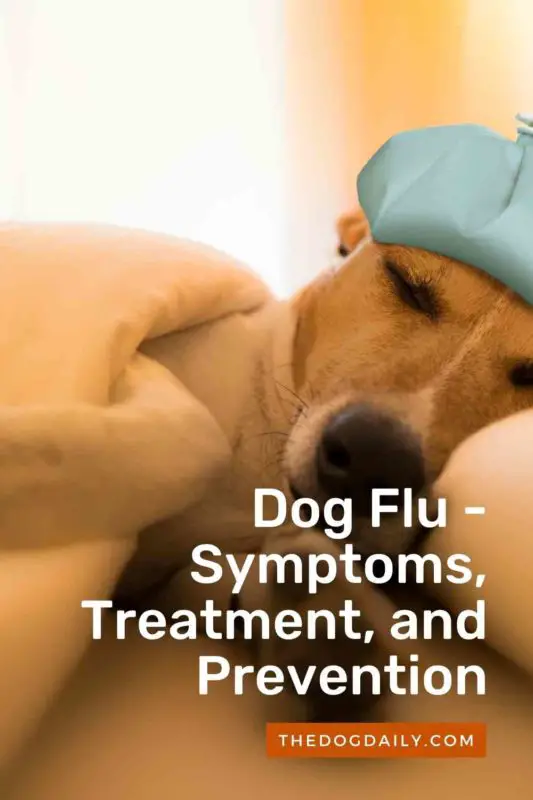What is Dog Flu – or Canine Influenza?
“Flu” seems to be a catchall word used to describe many different illnesses, from human flu to avian flu. Now, dogs can catch dog flu. But do you understand the symptoms, treatment, and prevention of this potentially life-threatening illness?
The Centers for Disease Control and Prevention issued new guidelines about canine influenza (aka dog flu). Ruben Donis, chief of the Molecular Virology and Vaccines Branch of the CDC’s Influenza Division, and other experts help answer key questions about this disease.
How did Canine Influenza First Emerge?
The canine influenza virus was first identified in 2004, but scientists believe it was around for a while beforehand. “We have demonstrated that the virus was in the Greyhound population as early as 1999, and we speculate it was likely introduced sometime before that,” says Tara Anderson, a researcher at the University of Florida College of Veterinary Medicine. She and others first became aware of it due to numerous respiratory disease outbreaks among dogs at racing tracks.
Donis explains that the virus causing the flu, called H3N8, existed in horses for more than 40 years. “Scientists believe that the virus jumped species, from horses to dogs, and has now adapted to cause illness in dogs and spread efficiently among dogs.”
Can it Spread to Humans?
There are no known cases of humans suffering from H3N8. “This is a disease of dogs, not of humans,” says Donis.
What are the Symptoms of Canine Influenza?
Affected dogs may show the following symptoms: cough, runny nose, fever, pneumonia (but, as with humans, only a small percentage of dogs get pneumonia).
How does the Illness Spread from Dog to Dog?
Airborne transmission is the primary way canine influenza spreads, according to Annette Uda, founder of PetAirapy LLC. This Illinois-based company specializes in air-purifying systems for the pet industry. “When an infected dog coughs or sneezes, it releases the virus into the air. The virus, which is in the form of droplet nuclei, can survive for hours — and in some cases much longer — on dust and dander until it is inhaled by another animal, causing infection.”
Can any Dog get Canine Influenza?
“Nearly all dogs are susceptible to infection,” says Donis. About 80 percent will just get a mild form of the disease. A lower percentage can get pneumonia and suffer more severe cases. Among that group, the fatality rate is between 5 and 8 percent.
How is Canine Influenza Treated?
It is essential first to confirm H3N8 via tests — either on blood or respiratory secretions or both. Once the disease is confirmed, treatment mainly consists of supportive care, such as taking steps to ensure your pet is well-hydrated. “Your veterinarian may prescribe broad-spectrum antibiotics if a secondary bacterial infection is suspected,” says Donis.
How Can You Help Prevent Your Dog from Catching Canine Influenza?
Try to keep your dog away from other dogs that might be ill. Dogs in close quarters, such as shelters and racing facilities, are more susceptible to this disease. “It’s very much a proximity issue,” says Ron Schultz, chair of the Department of Pathobiological Sciences at the University of Wisconsin-Madison School of Veterinary Medicine. “Open-air spaces like dog parks, however, carry a much lower risk.”
Schultz helped formulate a vaccine for dog flu, which is now widely available. He recommends it for dogs at high risk of infection, such as dogs that regularly go to doggy daycare facilities or participate in dog shows. “Even if you have 20-30 percent of dogs vaccinated, that would make a difference. It’s a group thing,” explains Schultz. “It only takes one of those dog flu outbreaks, and then people start to think. It’s not ‘mild’ for the dog that dies.”
What Should You Do if Your Dog has a Cough?
Coughing in dogs is frequently associated with a contagious illness, just as it is in humans. Take your pet immediately to the vet for a checkup. Taking your dog to the vet is for your dog’s sake and for that of other dogs that might catch the illness. Older canines and those with weakened immune systems are likely more susceptible to severe forms of the virus.
If your dog is diagnosed with canine influenza, keep it away from other animals. “Clothing, equipment, surfaces, and hands should be cleaned and disinfected after exposure to dogs showing signs of respiratory disease,” advises Donis.
Article written by Author: Jennifer Viegas

